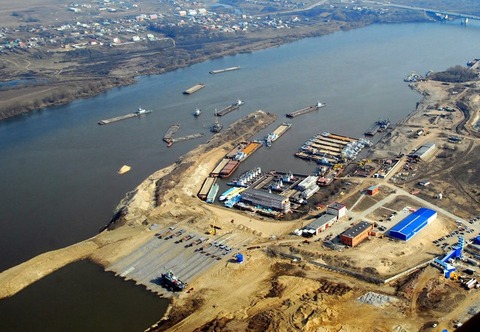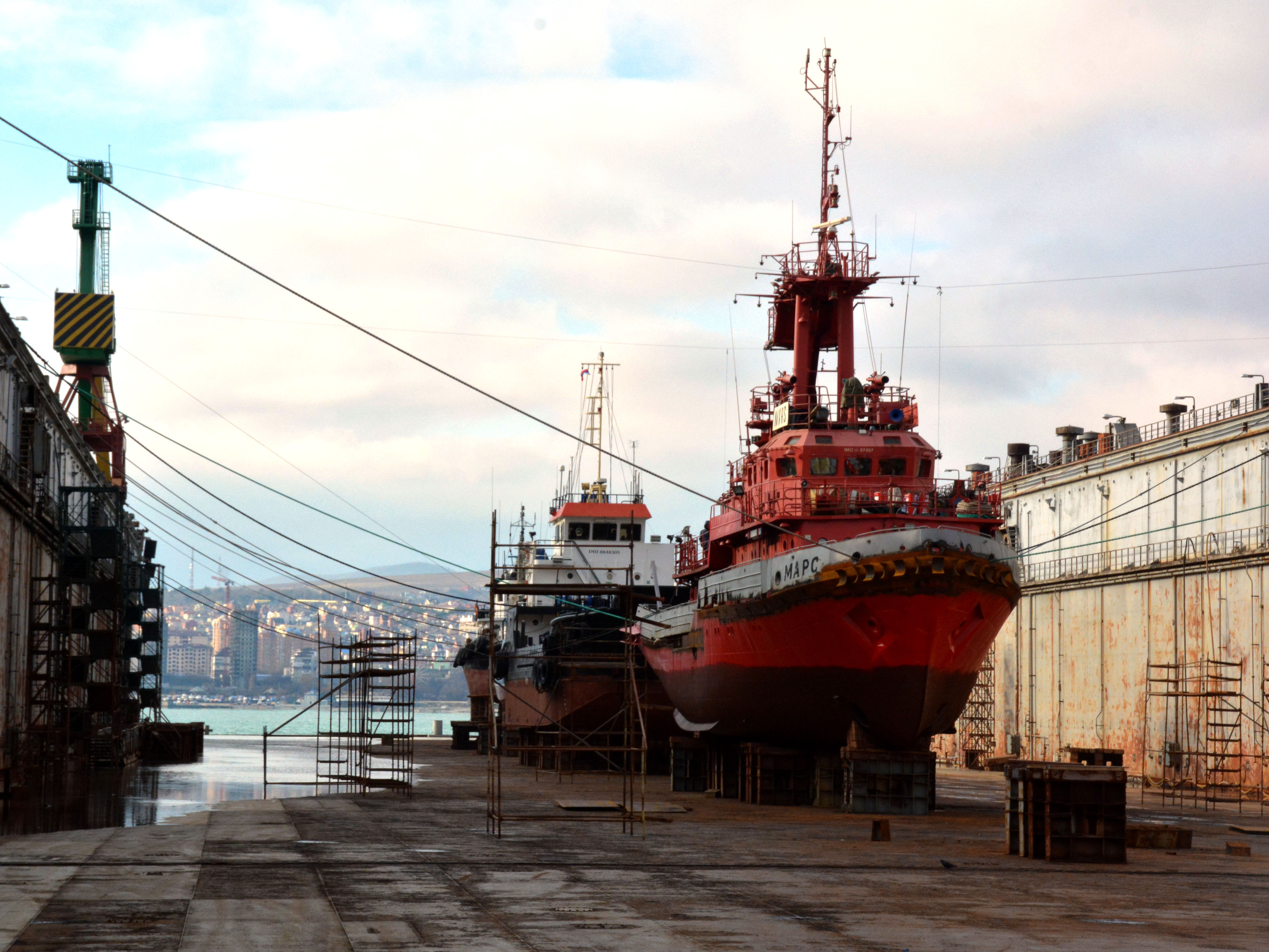
- Home
- Special Projects
- Neglected shiprepair
- Under the watchful eyes of registers
Neglected shiprepair
Under the watchful eyes of registers

The task of registers during technical survey is to confirm the compliance of the vessel and its equipment with the established requirements in the process and after completion of repair of marine components that have a direct impact on the safety of navigation and the transportation. Registers’ requirements may vary depending on the type of vessel and its operational environment.
On the river
Despite the absence of a system of planned maintenance and preventive repair, as a rule, ship repair is carried out in most cases following defects detected during regular drydocking and survey by the Russian River Register (RRR). In some cases, the need for repair can be established by the results of other types of survey. Besides, sometimes ship repair is required after breakdowns and accidents.
Due to the growth of vessels average age every year without expected fleet upgrade in sight, the volume of repair job for replacement of worn-out parts of steel hulls, for engine overhauls, elements of shaft lines and propulsion units is increasing. Shipowners now understand that the application of high-quality anti-corrosion and paint coatings significantly extends the life of hull structures and minimizes repair costs.
RRR carries out technical supervision over the repair of those elements of ships that are included in the nomenclature of survey, the requirements for which are formulated in the RRR Rules and which are related to the safety of navigation and transportation.
Repair of ships with the RRR class should be carried out in a legitimate manner, under the technical supervision of the register and in accordance with the requirements of the Regulation on the classification and survey of ships approved by the Ministry of Transport of Russia. The classification regulation does not provide for repair of ships without technical supervision of the RRR.
Technical supervision of repair at domestic or foreign shipyards is carried out on the basis of a contract, an appendix to which is a list of inspections that sets the scope of technical supervision.
The requirements of the RRR Rules are based on the provisions of the Code for Inland Transport and the Regulation on the Classification and Survey of Ships. In accordance with the Charter, the purpose of the RRR is to ensure the technical safety of ship operation and of floating crafts. Thus, the requirements of the Rules do not establish any protectionist or national barriers associated with the location of materials, products, equipment manufacturing.

On the sea
One of the tasks of the Russian Maritime Register of Shipping (RS) is to confirm the compliance of the vessel and its equipment with the established requirements in the process and after completion of the repair. Compliance with the requirements of the RS means that the object remains in good working condition, and at the same time, the parameters of operational defects are within acceptable limits.
Technical supervision of ship repair includes:
review and approval of ship repair documentation; verification of documents for materials (including welding) and products used during repair, verification of welders' certificates of permit and qualification documents of non-destructive testing specialists, as well as documents on accreditation and recognition of laboratories, etc.; survey and verification of the facility at various stages of repair work and reviewing of the conclusions of technical control bodies of the enterprise; the surveyor physical presence during tests of components in the process and after repair completion and, if necessary, during mooring and sea trials of the vessel.
RS conducts technical supervision of repair in accordance with a single procedure, both at domestic and foreign shipyards. The procedure is based on the requirements of several IACS documents, IMO, and of RS rules and guidelines. RS has the recognition and instructions of the maritime authorities of 68 flag states (as of 04/07/2020), as well as a broad network of foreign divisions, which enable RS to provide quickly and reliably a full range of services, including technical supervision of repair, in any region. The countries where RS services are required include Turkey, South Korea, and China.
The survey by the RS during the maintenance and repair is subject to those components of the vessel, the requirements for which are established in the RS rules and, if applicable, in international conventions and resolutions.
The need for RS survey of the ship during repair is determined on the basis of the nomenclature of technical survey of ship’s elements, given in Appendix 1 of Part I of the Rules for technical supervision of the construction of ships and of the manufacturing of materials and products for ships. The list includes such elements as parts of hull structures, main and auxiliary machinery, of various ship systems, etc.
If a ship’s element is undergoing repair which is not subject to the RS survey (for example, technological equipment), the classification society may require to present this object during the repair process in cases when this object or its technical condition affects the ship’s compliance with the requirements of RS rules or international documents. This concerns, for example, stability, durability of the vessel, fire and environmental safety. A similar rule applies if such objects are installed on a ship or dismantled from the ship.
The intervals between drydocking does not depend on the vessel type and age directly. First of all, it is determined by the documentation requirements for the installed equipment, as well as the actual technical condition of the vessel. When conducting technical supervision of the repair the RS is guided by the requirements of the technical documentation of the equipment manufacturer. The requirements indicate the overhaul intervals. If such documentation is not available, then the need for repair is determined by the defects detection. As a rule, the repair is timed to the next or intermediate survey of the vessel in the dry dock or afloat.
Due to the variety of modern types of ships, it is difficult to clearly identify the most required types of repair job. For example, they will be different for self-propelled and non-self-propelled vessels. There are three main groups, as in shipbuilding: repair of hull structures, machinery and electric system.
One of the most time-consuming and lengthy work is the repair of hull structures, especially for aged ships. To determine the technical condition of structures in general and the required repair volume, in particular, RS rules prescribe routine measurement of residual thickness of vessel shell plating. Compliance with the depreciation rate and other defects allows confirmation of the compliance of hull structures for the next classification period (usually five-year period). The volume of measurements of residual thicknesses on a ship depends on her age and type, as well as on the results of a general inspection of structures during the survey.
The RS is constantly working to optimize the requirements for the process of thickness measurements and the rate of depreciation, while maintaining the level of safety of vessel operation within the classification period. One of the results of this work is the VOLNA software package, presented in 2017. The software is mandatory for collecting, storing and evaluating the results of measurements of residual thicknesses and parameters of other defects in the hull structures of ships with RS class, their systems and pipelines, as well as the preparation of final reports. The software is used by firms for measuring thickness, surveyors and specialists of the RS. The VOLNA feature a user-friendly, intuitive interface, greatly simplifies and unifies the work of operators for processing thickness measurements and surveyors reviewing these reports, allows completion of the whole range of work to evaluate measurements using the appropriate RS’ rate of deterioration, generate a final report and upload the data to the RS server. The software is free and distributed under a license agreement.




